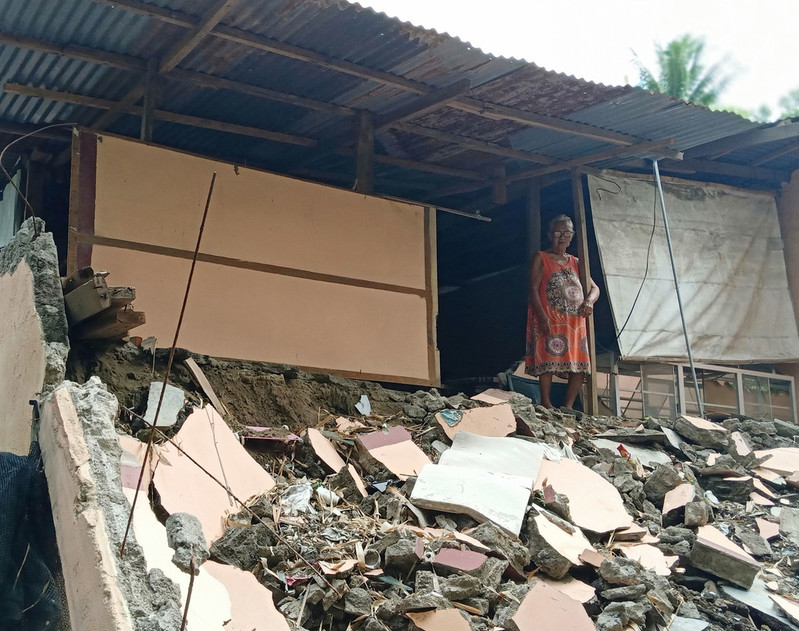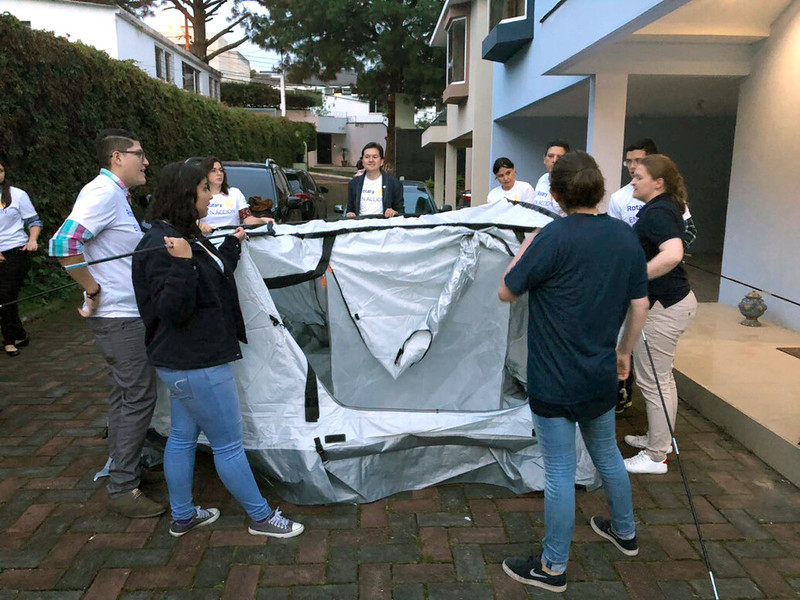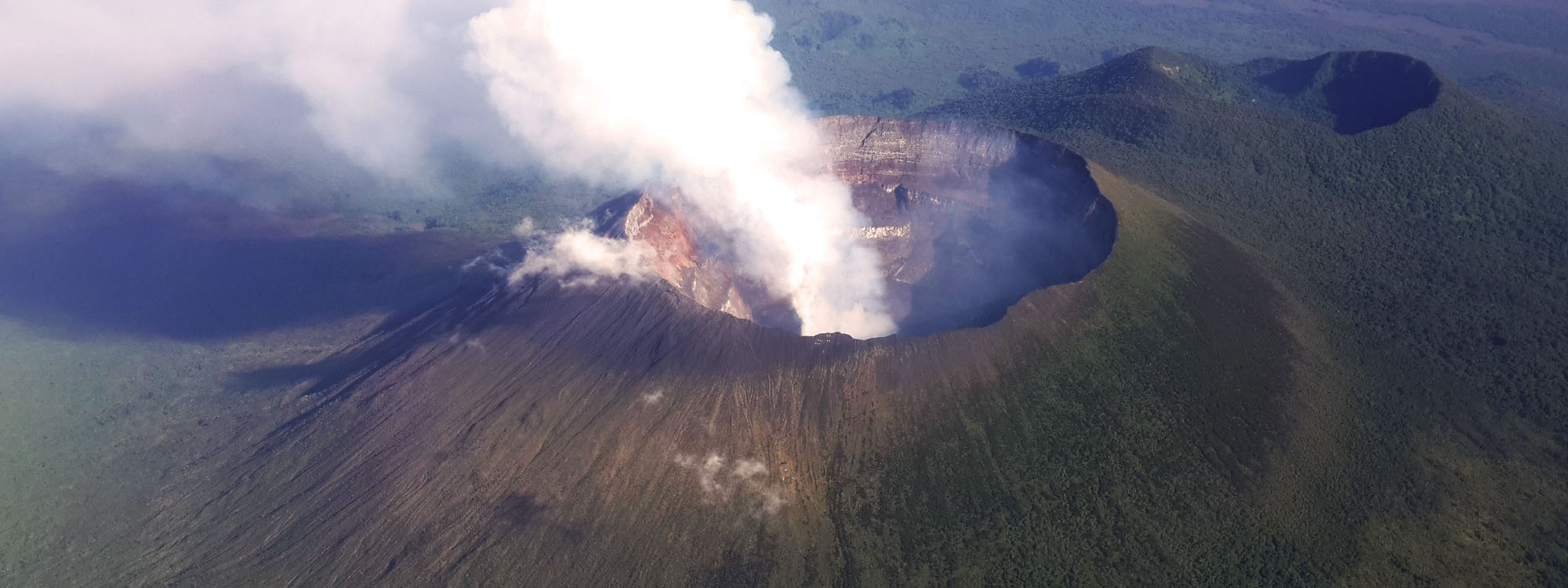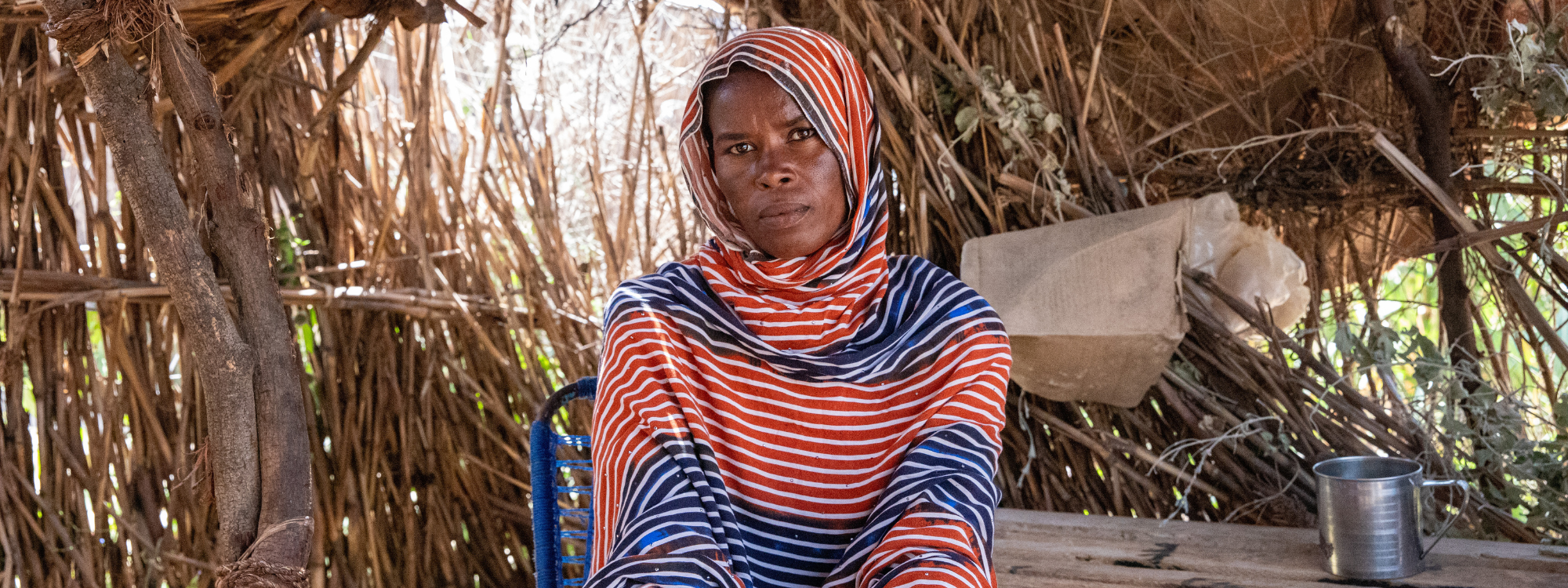
Blog
Mount Nyiragongo: The Aftermath of a Volcanic Eruption
On the evening of May 22, 2021, Mount Nyiragongo volcano suddenly erupted. The volcano is located in the Democratic Republic of Congo, near the city of Goma. Tens of thousands of people are fleeing their homes.
Here’s everything you need to know about volcanoes, Mount Nyiragongo, and how ShelterBox responds to this type of disaster.
VOLCANIC DISASTERS EXPLAINED
How often do volcanic eruptions happen?
There are about 1,500 volcanoes around the world that are known to have erupted at some point in the past 10,000 years. Most of these volcanoes could erupt again at some time in the future. In any year, about 60 to 80 volcanoes erupt. These will mostly be small eruptions and you won’t hear about them on the news.
The majority of volcanic eruptions occur along the Pacific Rim, in what is known as the ‘Ring of Fire’. The Ring of Fire is a path along the Pacific Ocean characterized by active volcanoes and frequent earthquakes. 75% of all volcanoes are located along the Ring of Fire.
Most volcanoes are found in lines along the edges of the Earth’s tectonic plates.
In some places, for example in South America, Alaska, and eastern Russia, volcanoes form tall mountains that are spaced 25 to 30 miles apart and line up parallel to the edge of the continent.
In other places, such as the West Indies, some Pacific islands, and parts of Indonesia, volcanoes form islands.
Volcanic Destruction
When a volcano erupts, huge amounts of very hot gas, boulders, ash, and molten rock can burst out. This is thrown into the air, often pouring down the side of the mountain, and into nearby villages.
Any buildings or structures surrounding the area of a volcano when it erupts will be destroyed or damaged by the extremely hot lava being expelled by the volcano. However, homes are most commonly destroyed by hot ash falling like rain on everything below. The distance the lava and the falling ash can travel differs for every eruption, but lava has been recorded traveling 100mph, and falling ash can travel for thousands of kilometers.
Currently, in the Democratic Republic of Congo, carbon dioxide toxicity has been named the cause of death for children. This occurs when gas seeps from the ground at high levels.
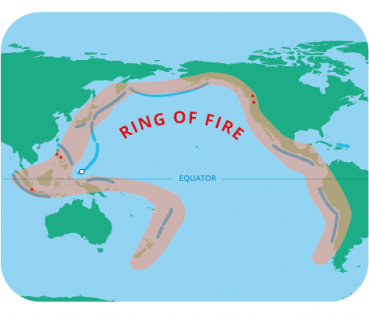
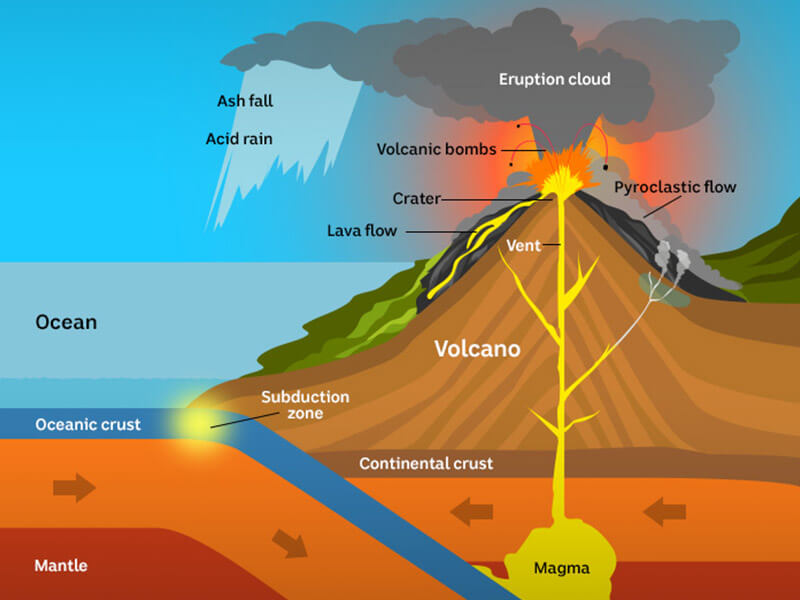
MOUNT NYIRAGONGO
Mount Nyiragongo has been called one of the world’s most dangerous volcanoes.
Mount Nyiragongo is Africa’s most active volcano. It last erupted in 2002 killing 250 people. Its largest recent eruption was in 1977, which killed around 2,000 people.
Mount Nyiragongo is never a calm volcano. There is a permanent lake of lava bubbling inside its crater. This is one of the only locations on the planet where the lava never stops. The lava lake has been measured at 60 feet high and 600 feet wide.
This volcano is considered one of the deadliest due to the consistency of the lava. It is very fluid and is capable of moving very quickly, up to 40mph (compared to most which usually max out at 25mph).
When volcanos erupt, they also release deadly quantities of carbon dioxide gas. Millions of people live in the surrounding areas of the volcano, which puts them at risk of exposure to this deadly gas.
Check our our disasters explained page if you want to learn more about why people live near volcanoes.
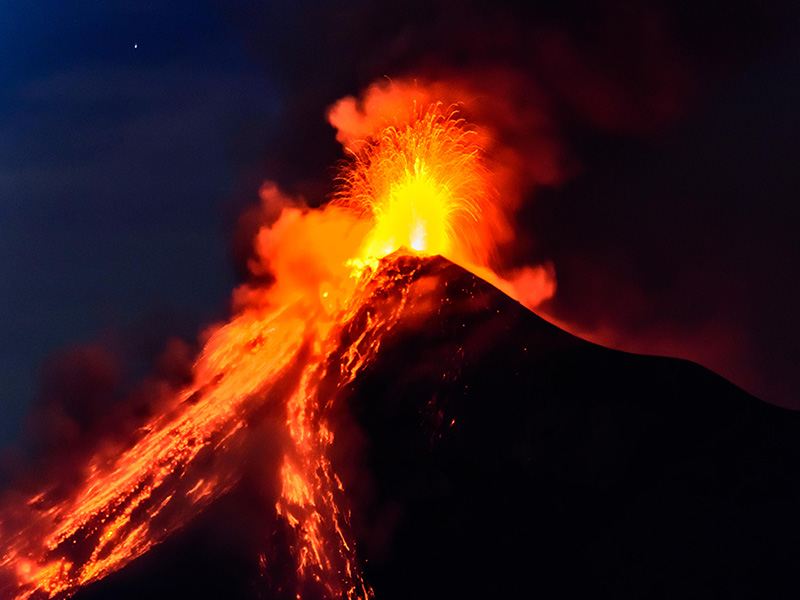
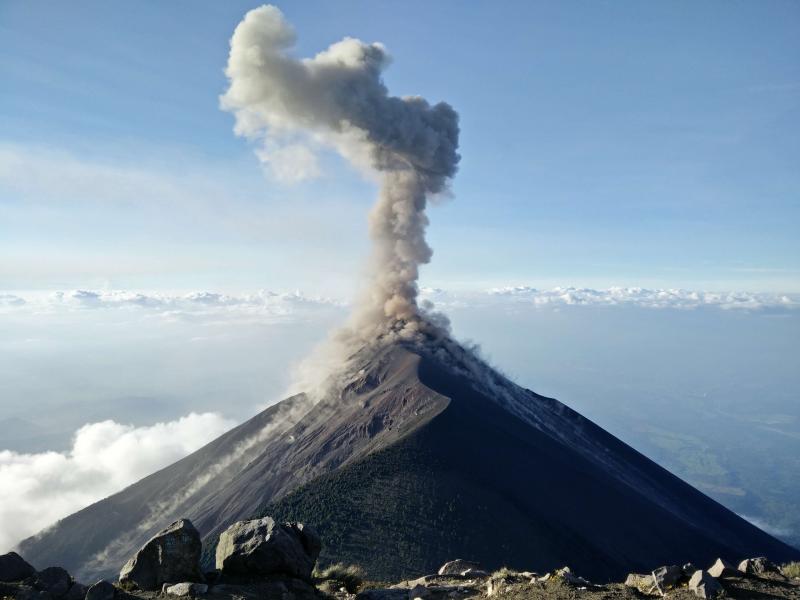
HOW SHELTERBOX RESPONDS TO VOLCANOES
ShelterBox is always on alert to respond to a volcanic eruption, just like any other disaster.
However, extra care needs to be taken when responding to volcanic eruptions, due to the dangers and challenges around this type of disaster. We need to make sure the environment is safe for our Response Teams to operate in.
We might send our Response Teams out with additional safety equipment, such as respiratory protection, as the air quality can be affected by volcanic eruptions.
As soon as we know the operating environment is safe, we would aim to have a ShelterBox Response Team on the ground.
What are the challenges of responding to a volcanic eruption?
In the aftermath of an eruption, communities often face huge difficulties as the volcano can still be active. There is often a lot of seismic activity after a volcano erupts, so communities cannot return to certain areas until it is shown to be all clear.
Previous Responses
In June 2018, Guatemala was left reeling after the most violent and devastating volcanic eruption in 44 years.
The Fuego volcano spewed lava, ash, rocks, and deadly hot gas onto hillside villages, killing over 100 people. Hundreds of families were living in schools and churches for some time after they’d left their home. Sanitation and privacy were poor, as these buildings were not designed to house so many people. ShelterBox responded in the area, providing tents to help families leave collection centers.
In January 2020, the Taal Volcano erupted in the Philippines.
Over 580,000 people were affected, with many taking temporary shelter in crowded evacuation centers or staying with loved ones. For more than four months following the disaster, many people were not able to return home. Many were living with host families.
Thanks to ShelterBox Operations Philippines, around 2,000 families were supported with essential items like shelter kits, tarpaulins, rope, mosquito nets and solar lights. These items will allow host families to extend the footprint of their homes, providing more space for social distancing.
